Deadly Class is a very interesting story for someone like me to read. As was played for laughs in the 2012 adaptation of 21 Jump Street, the dynamics of high school cliques have changed from when Rick Remender was in high school. The TV shows and movies I grew up watching spoke to Gen X and the Boomers about how stratified school was and the tensions in finding your group. Remender ratchets this up way past 11 with Marcus ending up in a school for the children of assassins and crime families. There are literally deadly consequences to the choices of who to befriend and who to snub; what teens felt was real transmuted into reality. By the time I was in high school, 9 years after Remender, most of the rigidity of cliques had faded and even nerdom was not the curse it had been before Bill Gates and Steve Jobs became some of the richest men in America. In fact, in my high school, one of the top cheerleaders was also in my AP classes.
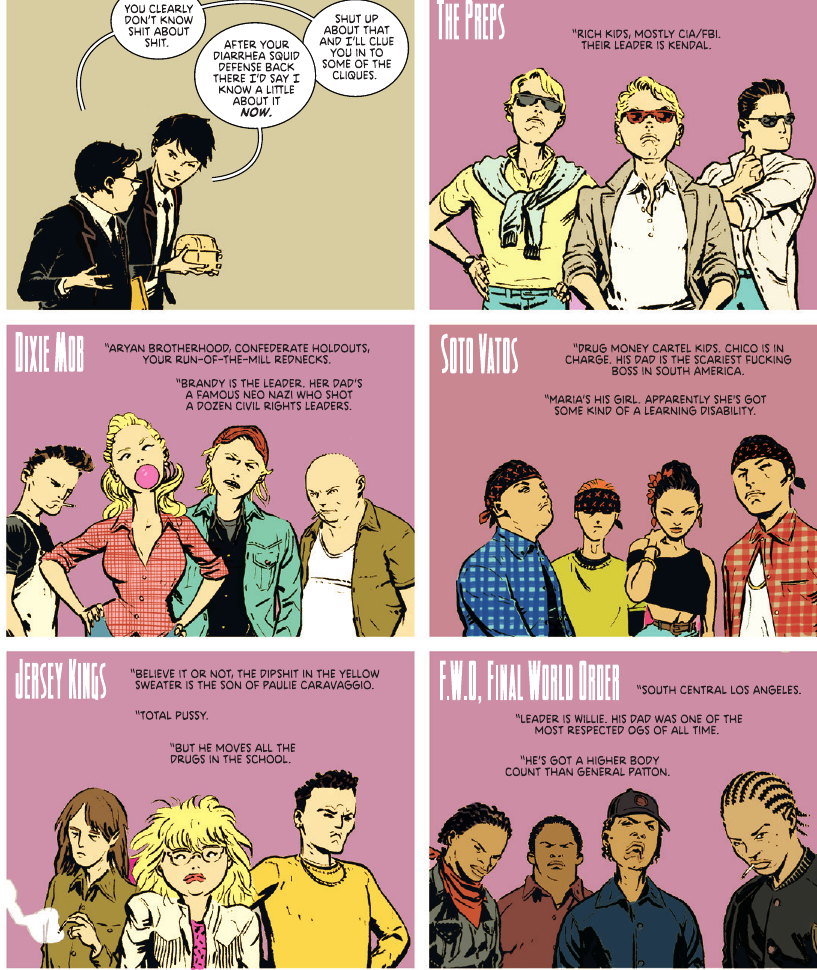
But if high school life wasn’t as stuck in the caste system for me as it was for the prior generations, there were still plenty of feelings that have been universal for all of human history (or at least since the concept of the teen was invented in the 20th century). Marcus finds himself with one girl who is willing to to be his girlfriend even as he pines for another. The overcharged emotions that come with hormones and sometimes not truly knowing who to trust with feelings is universal. And, for some segment of Deadly Class readers there is the feeling of not belonging that can be very real for the student who either through scholarship or bussing programs ends up being the poor kid in the rich school. Imposter syndrome can be a very real thing.
There’s also another aspect of Deadly Class (through the first two books, at least) that spans generations: The Holden Caulfield. Marcus’ self-destructive nature despite being given many chances to turn his life around and make use of his skills, makes him annoying like Caulfield or Quentin Coldwater in The Magicians. Here’s a kid who truly has nothing to complain about, whose dreams have (to some degree) come true, and yet still finds a way to piss on it all and be sour.
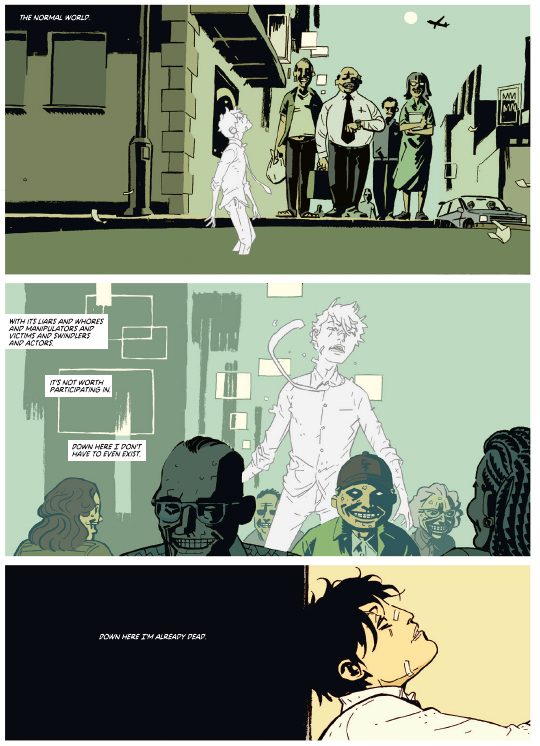
But let’s move away from that thread and talk about some of the other themes. The story starts off with Marcus wanting to kill President Reagan for ruining his life. The Iran-Contra scandal is mostly remembered in America, as a scandal that Reagan and George H.W. Bush weaseled out of without any political consequences, when it’s remembered at all. Yet, like every other thing the US has ever done in another country, the effects of our meddling there had long tail effects. In Deadly Class it’s the reason Marcus’ parents have to relocate to the USA. In our world, it’s one of the reasons MS-13 is something we have to worry about. Remender continues the thread about the long tail of politics on the little guy by also having a suicide be responsible for a tragedy in Marcus’ life and the suicide might have been prevented had Reagan not cut funding to mental institutions. Again, in real life, this led to a larger homeless problem and incarceration problem as folks who weren’t able to deal with the world on their own were cut off from help.
The second hardcover book deals with Saya and the other sophomores as well as a new freshman class. By using this structure, Remender can show what is universal and what is unique to the various students by virtue of being freshmen in an assassin school. Some of the same mistakes are repeated. Marcus was mean to Shabnab with dire consequences. Zenzele makes the same mistake with her roommate. Of course, like all high school students everywhere, the kids (especially the freshman who don’t yet know the way the school works and what will happen at the end of the year) break many of Master Lin’s rules. Saya does not just provide continuity within the story, she also is able to serve as a mentor to her freshman.
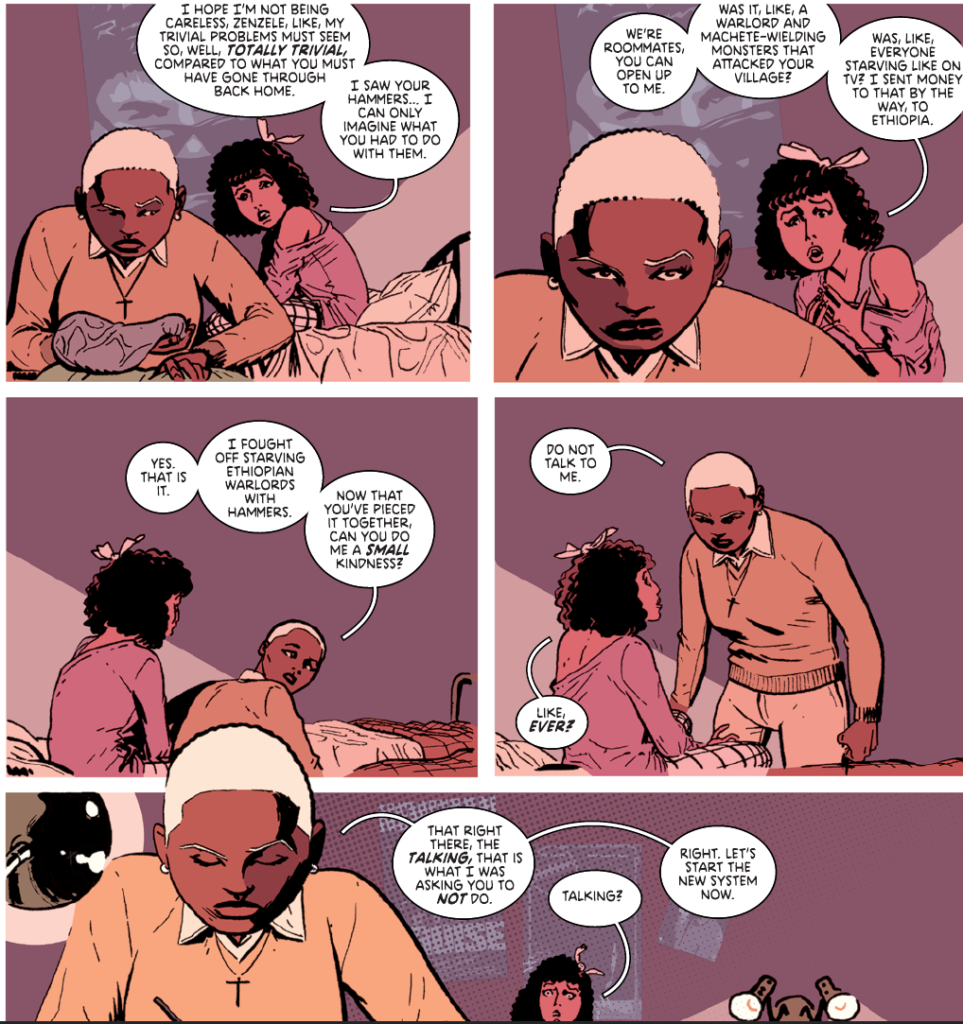
Moving away from the story, Wes Craig’s art is beautiful. I’ve been holding off on watching the TV show (which only lasted 1 season) until I write this, because I didn’t want any differences blurring things for me. But one thing I’ve been very curious about is how that would translate to the show. For example, take a look at this two page spread:
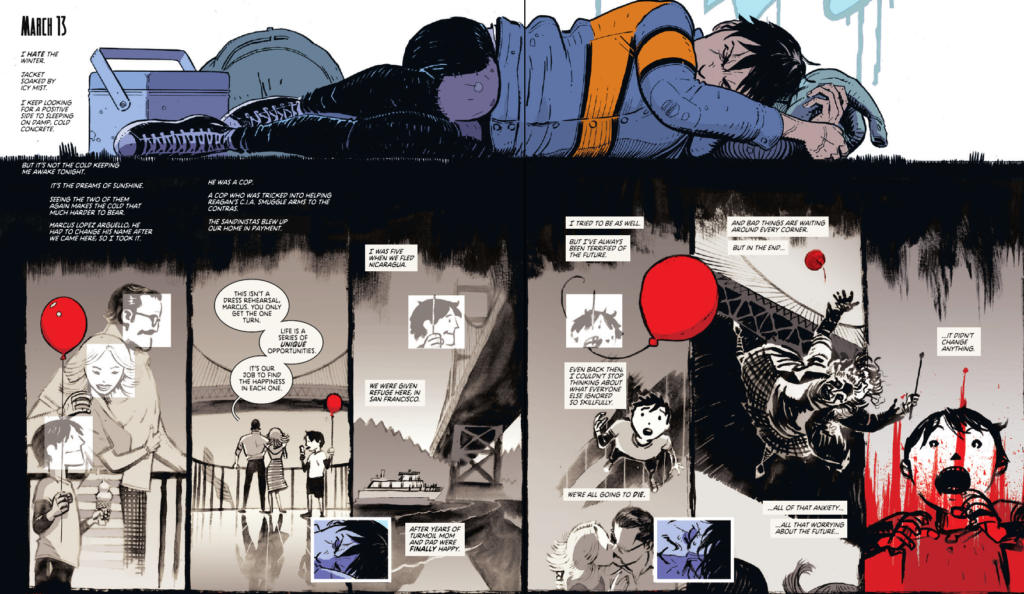
At the top we’ve got Craig’s semi-realistic style and below we have Marcus’ reliving his memory of what happened to his parents. The art style is this simplistic style that reminds me of the original Curious George, reflecting his more simplistic time as a little kid. It’s in black and white (as per the “rules” for a past memory) except for the balloon. The balloon he releases as his innocence floats away, and, of course, the red is very symbolic of what’s about to happen.
And sometimes, it’s taking what comics do best, the ability to change the way you draw things that conveys the feeling better than anything you can depict in real life. Look at this scene where Saya and Maria do some blow:
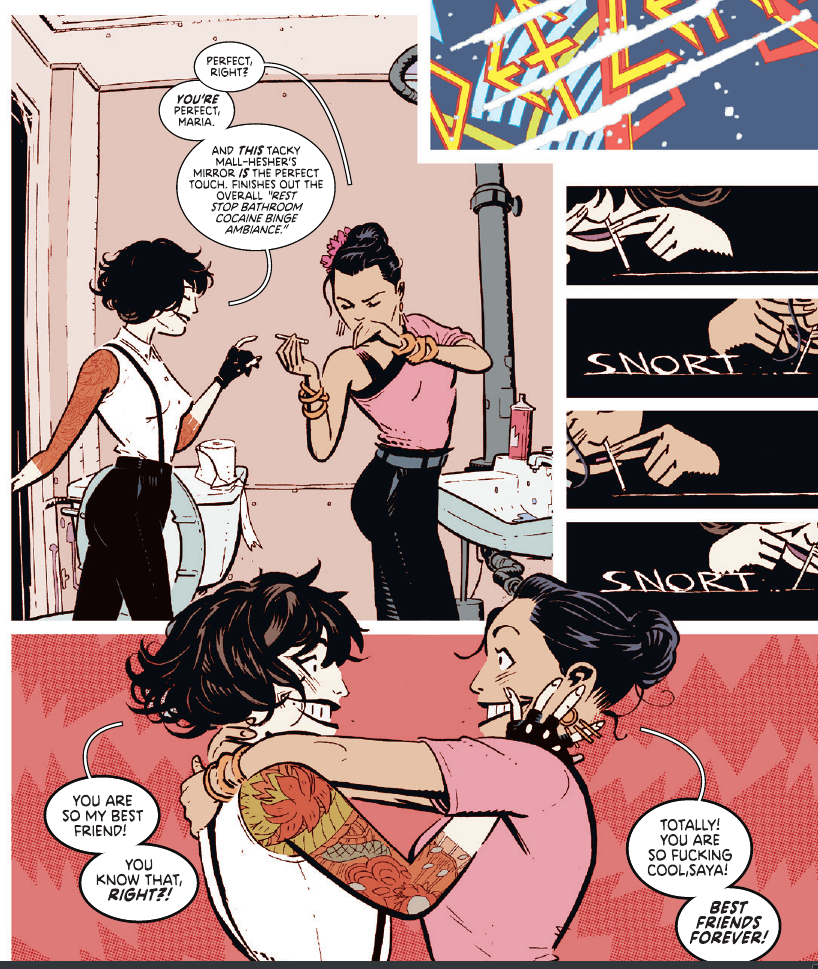
That last panel is better at conveying the effects than anything I’ve ever seen on TV or in movies. And, of course, there are the many scenes where Marcus is high. For exdample:
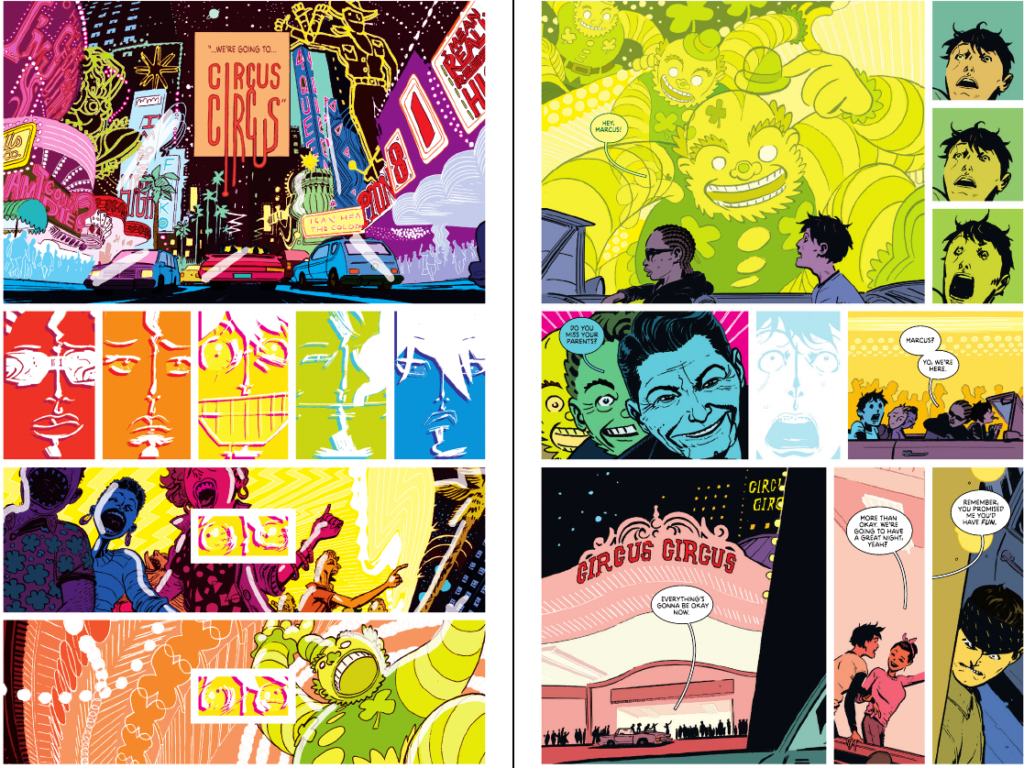
There is definitely an ever-growing cinematic vocabulary to convey these concepts in TV and movies, but comics can really use a much larger suspension of disbelief to create a truly artistic story.
Remender does an excellent job grounding his story in the events and aura of the 80s while also telling a coming of age story that isn’t the same old coming of age story. He touches on themes of found family vs biological family. In some cases, one is better and sometimes it’s worse. But mostly, Remender excels at bringing us back to the chaos of that time where you’re adult enough to make a real mess of things (people die!), but not yet adult enough to make the right choices.
Next I’ll be covering the first (and only) season of the live adaptation of Deadly Class to compare it to the comics. Generally, I’ve noticed that comics, books, and plays tend to push the envelope way further than TV and movies. This makes sense because they have unlimited special effects budgets (and also can play with suspension of disbelief in different ways) while TV and movies cost real money and have to make that money back. That said, with Netflix and Amazon pushing the envelope and pay TV getting more and more artistic, perhaps the show will end up in its own special place. Of course, there’s also the fact that different mediums have different strengths and weaknesses so adaptations need to make some changes out of necessity.
See you then!
Deadly Class hardcover books 1 and 2: by Rick Remender and Wes Craig.
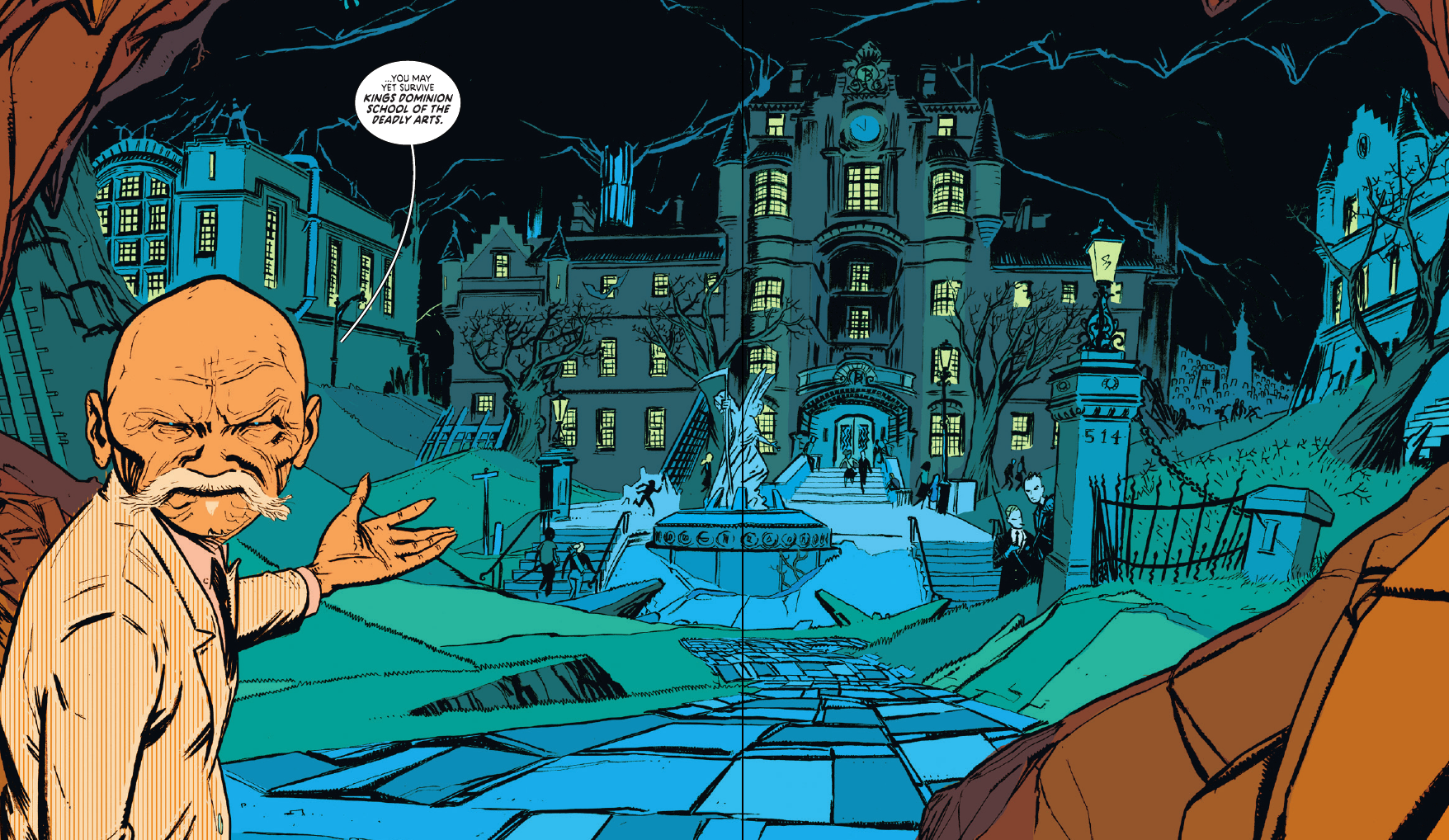
[…] When I took at look at the first two hardcover books, I wondered how Wes Craig’s art would be translated to the small screen. After all, it’s often hard to match the expressiveness of drawn art when it’s true art rather than simply panel after panel of characters moving around. The show’s answer was to just get the best of both and have many of Marcus’ flashbacks done as animation rather than live action. As a bonus, not only does it preserve what was great about Craig’s art, but it also (if rumors about Kill Bill’s animated scene is to be believed) allows for violence that wouldn’t make it past the censors if it was done with actors. […]